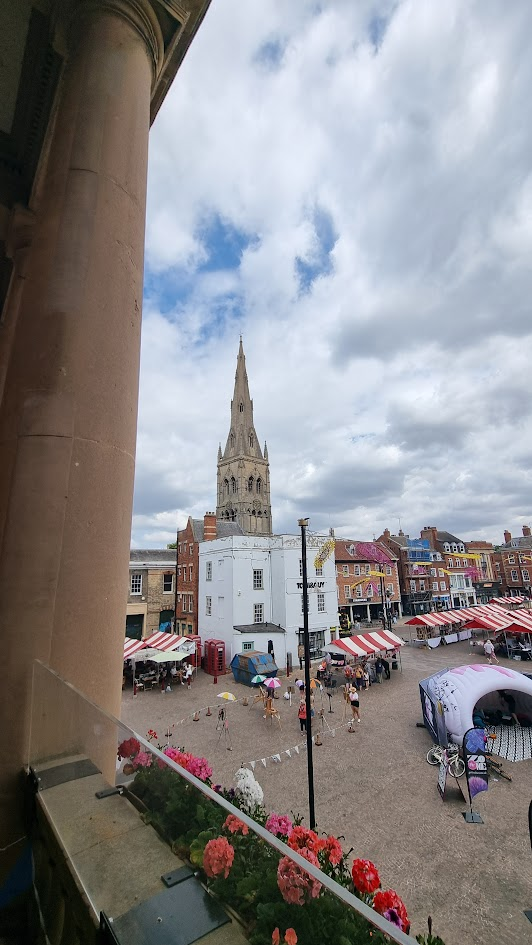Thinking about Historic England’s 'At Risk' Register…
By Barry Richardson
I've been thinking about the factors that led to St. Mary's inclusion on Historic England's 'At Risk Register' which identifies historic buildings, monuments, archaeological sites, parks, and conservation areas deemed vulnerable to loss due to neglect, decay, or inappropriate development.
A core ambition of the Re-Awakening Project is to remove St. Mary's from this Register. For those wishing to explore the Register further, please refer to the Historic England website.
Visible Signs of Deterioration
Visitors to St Mary's pre-Project could see some obvious indicators of the church's vulnerable state.
During periods of rain, it was common to see dedicated church members and staff members strategically placing buckets in known leak areas to collect water. It seemed to me in a sense that the building was weeping.
Even a casual inspection of some of the stained-glass windows showed deterioration, with a pervasive green external film and visible gaps where small damaged areas allowed the elements to penetrate.
There are/were other aspects, but these two were quite apparent..
The View from the Tower
A visit to the tower during a Heritage Open Day (highly recommended to those who have a head for heights) provided a striking perspective on the scale of St. Mary's roof and the source of the leaks. I was impressed by the size, not previously having connected the generous proportions of the interior with its external footprint. The roof is truly immense, highlighting why repair and replacement constitutes a significant focus of the Project.
A repeat photograph will show replaced stonework, but I haven;t yet had the opportunity to take that picture.
Recall that St Mary’s is one of the largest Parish Churches in England, (and incidentally is as tall as Canterbury Cathedral - see Wikipedia) giving a sense of the large scale of work required on the roof.
Above - The huge expanse of roof as seen from the Church Tower.
St. Mary's Enduring Heritage
During various pre-Project visits, I frequently overheard visitors expressing delight and admiration for the church's remarkable art, architecture, fittings, monuments, and carvings.
These discussions underscore the deep appreciation for its historical and artistic significance.
A Nationally Significant Treasure
All of these points underscore St. Mary's profound importance within England's collection of historic buildings. St Mary’s stands as a vital contributor to the National historic narrative, boasting elements from the Norman Conquest to the present day woven into its story and fabric.
Returning to my initial reflection, it's clear that the ‘repair and conserve’ aspect of the Re-Awakening Project is not merely about structural preservation, but about safeguarding a crucial piece of England's heritage.
What's Next?
In my next blog post, I will begin to delve into some of the specific architectural and historical elements that truly make St. Mary's a "jewellery box" of English history.
Postscript - two ‘different’ perspectives
At Newark Book Festival 2025 visitors to the Town Hall could access the balcony - I couldn’t resist a peek at the Church from this vantage. Here are a couple of pictures looking from the Church at the Town Hall, and from the balcony back to the Church..
Above - St Mary’s church tower looking to the Town Hall balcony
Above - …and from the balcony looking back at the Church
Whilst at the Book Festival, I also stumbled across a piece of street art I had not noticed before, on the old Sir John Arderne site just yards away from the front of St. Mary’s. Sir John was a surgeon, and whilst unrelated to St Mary’s narrative, those interested can read his story at Wikipedia. For those wishing to find the art, it is here.
Above - Street art of St Mary’s painted by student(s) from Newark College, looking directly up the spire
Above - the similar photographic view





